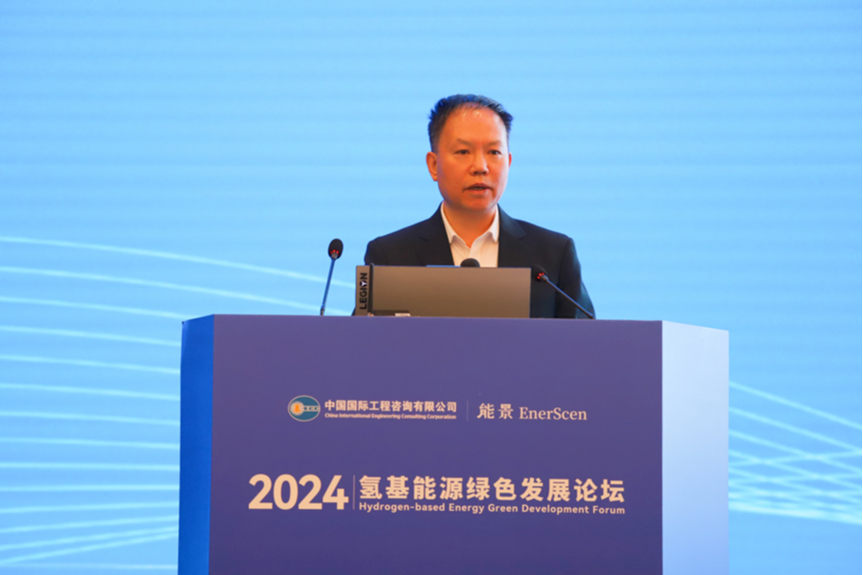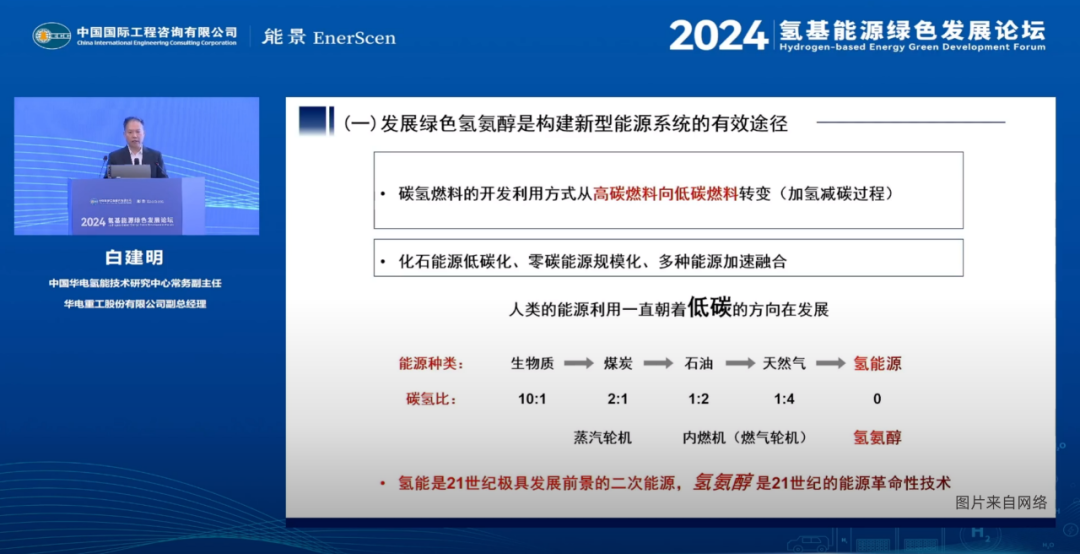Green hydroammonia alcohol has multiple functions of hydrogen carrying, carbon sequestration and emission reduction, and the technology and market show multiple directions
Recently, at the "2024 Hydrogen-based Energy Green Development Forum" jointly organized by the Hydrogen Energy Center of China Consulting Corporation and Nengjing Research, Bai Jianming, executive deputy director of China Huadian Hydrogen Energy Technology Research Center and deputy general manager of Huadian Heavy Industry Co., Ltd., delivered a speech entitled "Current Situation and Development Prospects of Hydroammonia".
In his speech, Bai Jianming gave a wonderful introduction to the necessity, development status and development prospects of hydroammonia alcohol.
Some of the contents and views of the speech are excerpted for your reference. Part of it is as follows (first-person narration).

The energy revolution is moving towards decarbonization, with less carbon and more hydrogen








